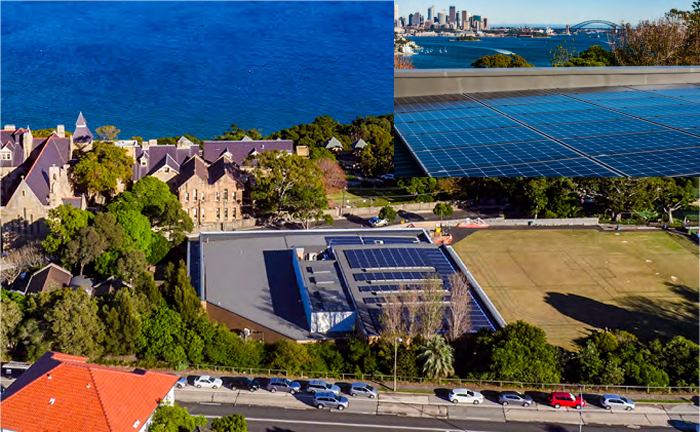
Kincoppal-Rose Bay School Installs Solar Panels
What is currently the second largest solar power system and the first at a school in Sydney’s Eastern Suburbs was officially unveiled last week.
Kincoppal-Rose Bay (KRB) is now sporting solar panels on the rooftop of the Maureen Tudehope Centre. The system will generate approximately 149,000 kWh of electricity annually – enough to power 26 average Australian homes.
“It will slash 30% off our yearly energy bills, and help to avoid over 130 tonnes of carbon emissions – equivalent to taking 47 cars off the road annually,” said Kincoppal-Rose Bay principal, Hilary Johnston-Croke.
As well as reducing the school’s electricity bills, Ms. Johnstone-Croke commented that the system was a “practical and inspiring way” to educate students about climate change and renewable energy. The school’s students and their families have been very enthusiastic about the project.
“Climate change is a really important issue facing the world today and we are pleased to have solar power at KRB so that we can be part of the solution,” said Year 12 Environment Committee Head, Charlotte McGuire. “We hope it further inspires all students, their parents and others in the community to think carefully about their energy use and consider installing solar at home.”
The system was jointly funded by Kincoppal-Rose Bay, which contributed most of the cost, and the New South Wales Government.
‘Solar My School’ Program Proving Popular
The project is a result of the Solar My School initiative, which is designed to assist Sydney’s Eastern Suburbs schools with determining an appropriate system and locating a suitable installer, plus provides educational materials for teachers to use as part of the curriculum.
“Switching to solar energy helps reduce our environmental impact, and also helps schools to cut energy expenses and funnel the savings to other programs,” says Waverley Council. Other councils involved with the initiative are Woollahra and Randwick.
According to Reduce Your Carbon Footprint, an online initiative of the councils and NSW Environmental Trust, 15 schools in the Eastern Suburbs have signed on to install solar panels under the program. A related ABC report puts the number at 27 and states 1,421 government schools across New South Wales have already installed solar power systems.
Schools are often ideal for PV-based electricity generation as the bulk of their energy consumption occurs during sun-hours. School buildings also generally offer a significant amount of roof space; enabling a large number of solar panels to be installed.
With the cost of solar panels in Australia having dropped substantially over the past few years, the technology is now even more affordable and may be within reach of more schools – even without additional grants and subsidies other than financial incentives available to just about everyone. Options such as Power Purchase Agreements (solar PPAs), which usually involve no capital outlay, may also be worth considering.

 RSS - Posts
RSS - Posts



Speak Your Mind